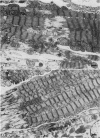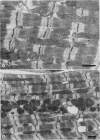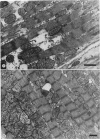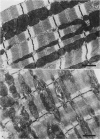Abstract
Perfusion of the isolated rat heart with Krebs-Henseleit solution containing adrenochrome (25 or 50 mg/l), and oxidation product of catechalmines, resulted in contractile failure and myocardial necrosis. Various pharmacological agents known to protect the myocardium against catecholamine-induced necrosis were also found to be effective against adrenochrome-induced changes in the ultrastructure of the isolated perfused rat heart. The alpha-receptor-blocking drugs tolazoline and Dibenamine (dibenzylchlorethamine), and the adrenergic neurone-blocking agents guanethidine and bretylium did not alter the development of contractile failure and necrosis due to adrenochrome. The beta-receptor-blocking compounds propranolol and practolol effectively protected the heart from adrenochrome-induced necrotic damage, and partially prevented contractile failure. The hydrazine-type monoamine oxidase inhibitor iproniazid completely prevented ultrastructural damage and partially maintained contractile-force development in adrenochrome perfused hearts. The non-hydrazine-type monoamine oxidase inhibitor tranylcypromine partially protected the isolated rat heart against adrenochrome necrosis, but disruption of mitochondrial structure was still seen. Tranylcypromine did not significantly improve contractile force development during adrenochrome perfusion. The calcium antagonist D-600 reduced the severity of adrenochrome-induced ultrastructural damage. These results provide strong support for the view that catecholamine-induced cardiotoxicity is mediated through the formation of adrenochrome.
Full text
PDF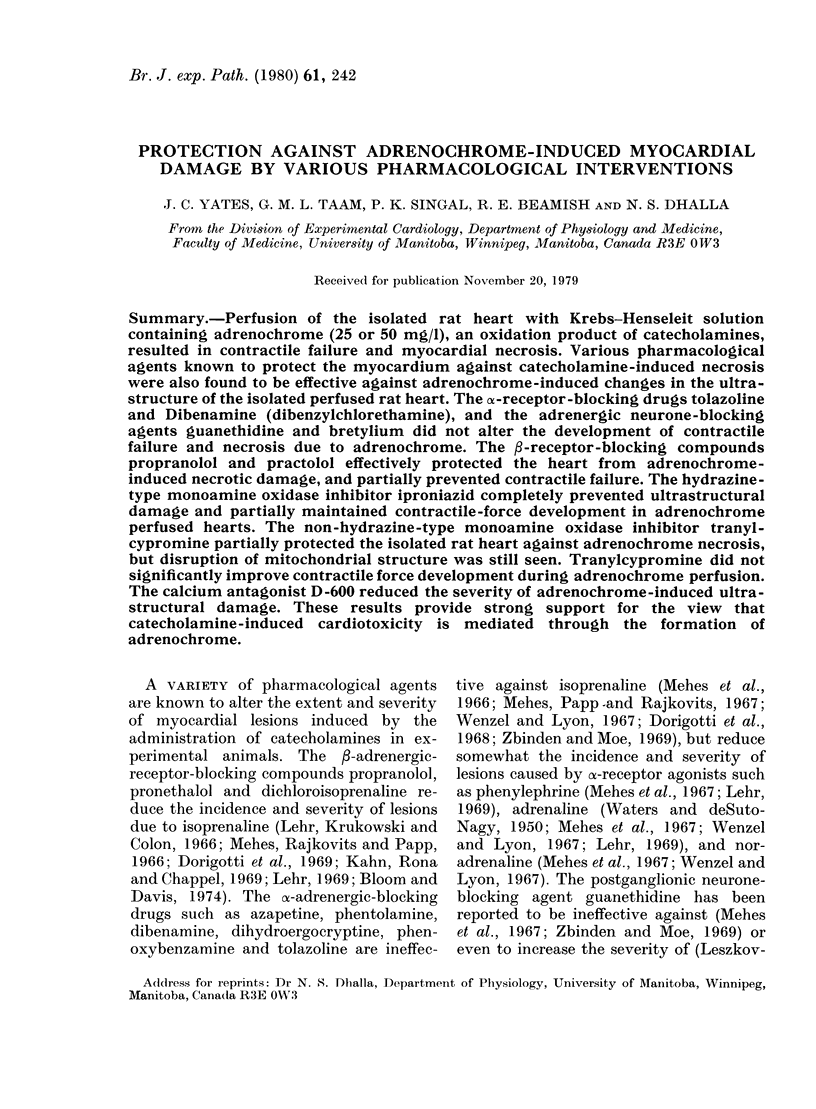
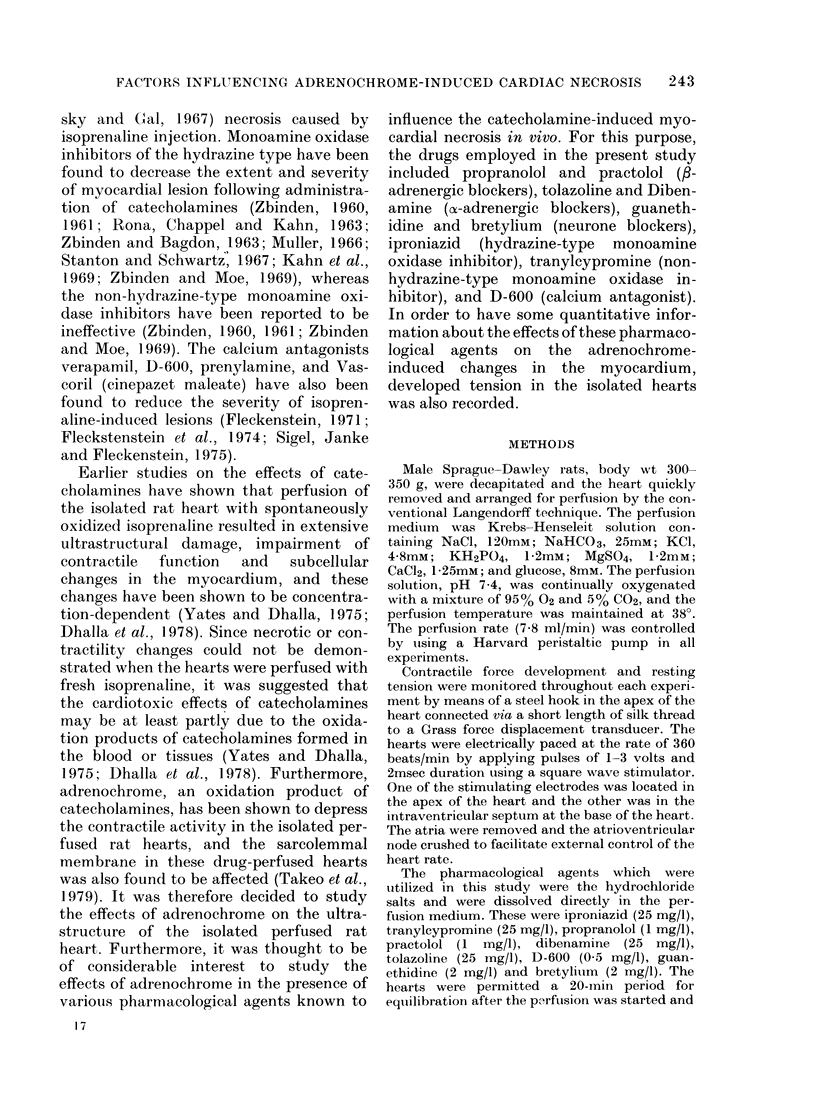
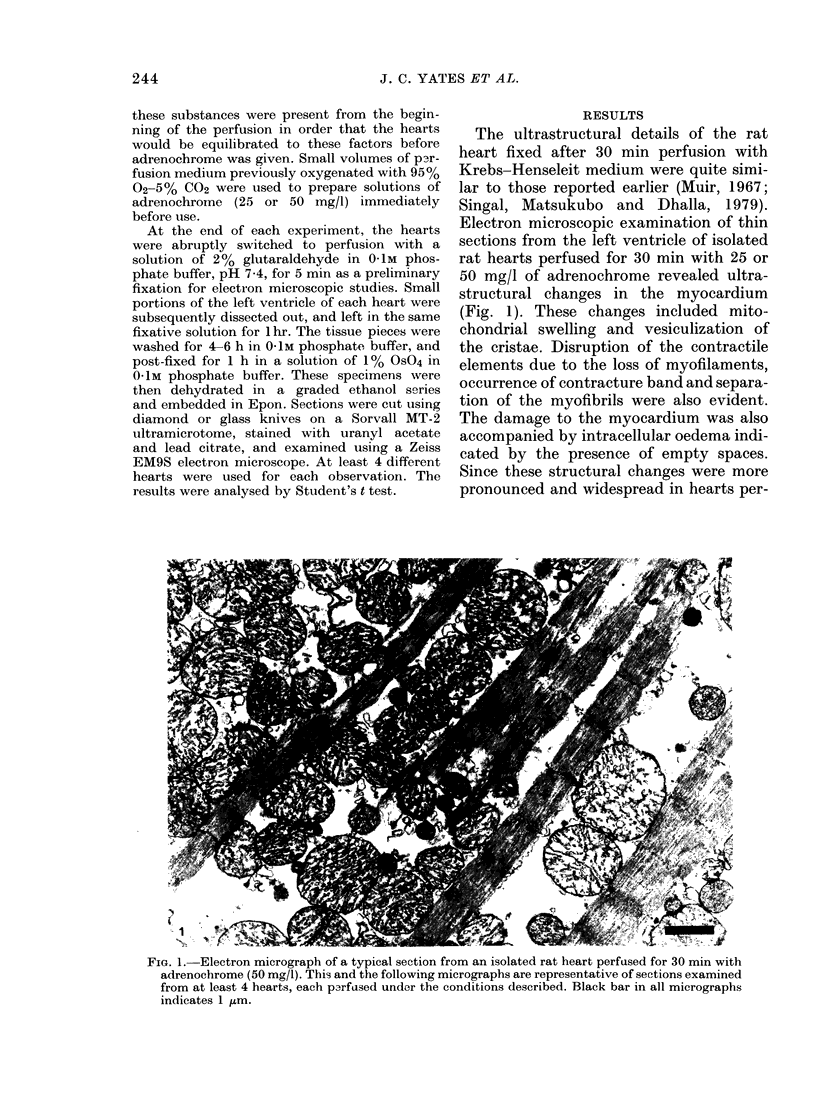
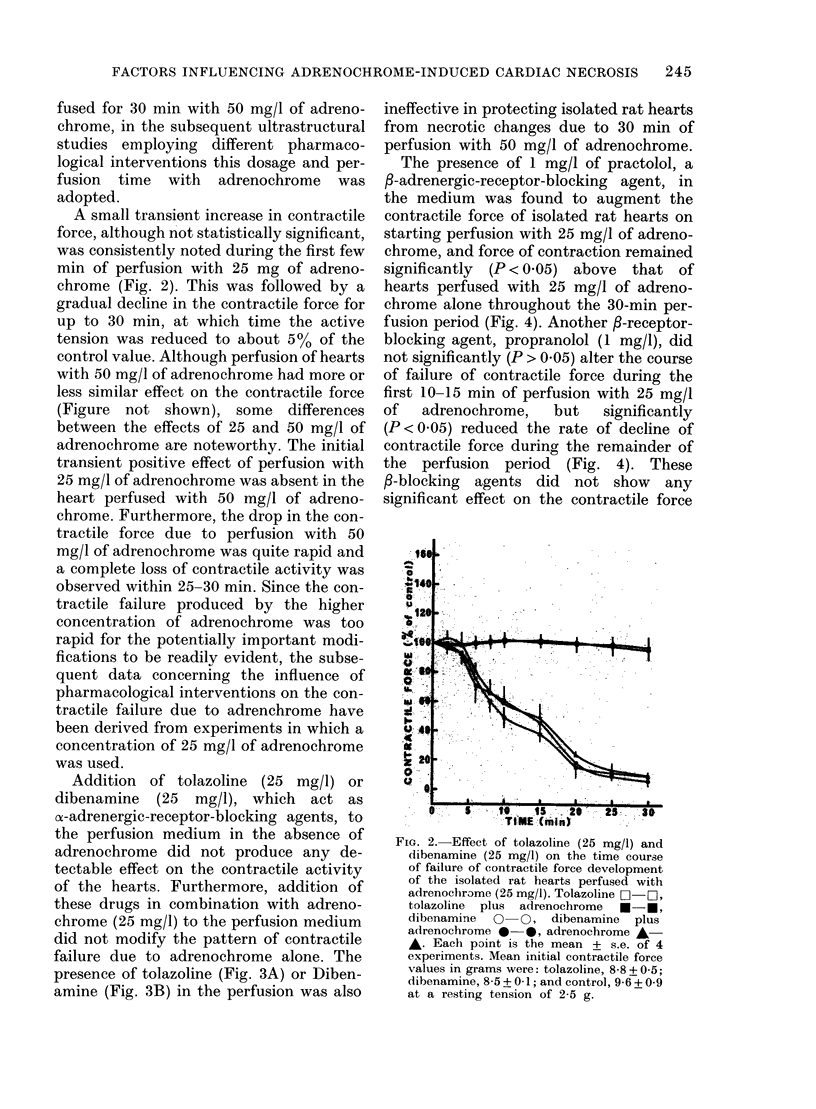
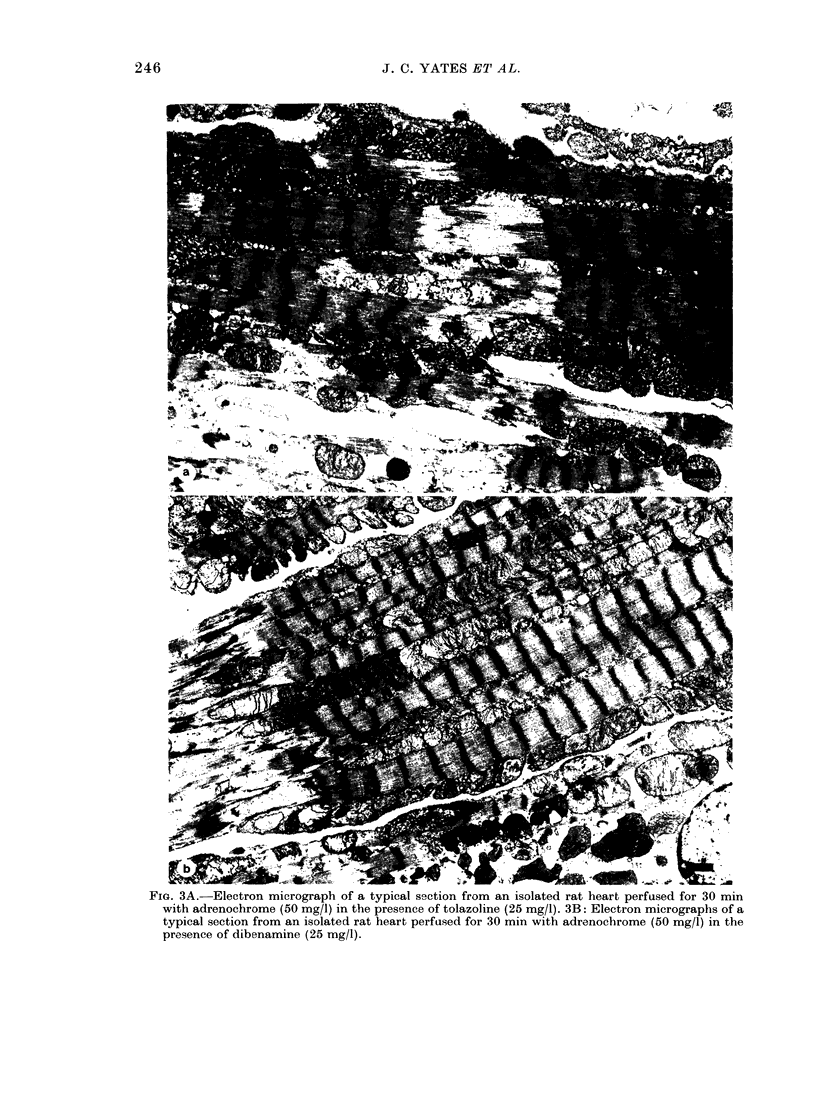
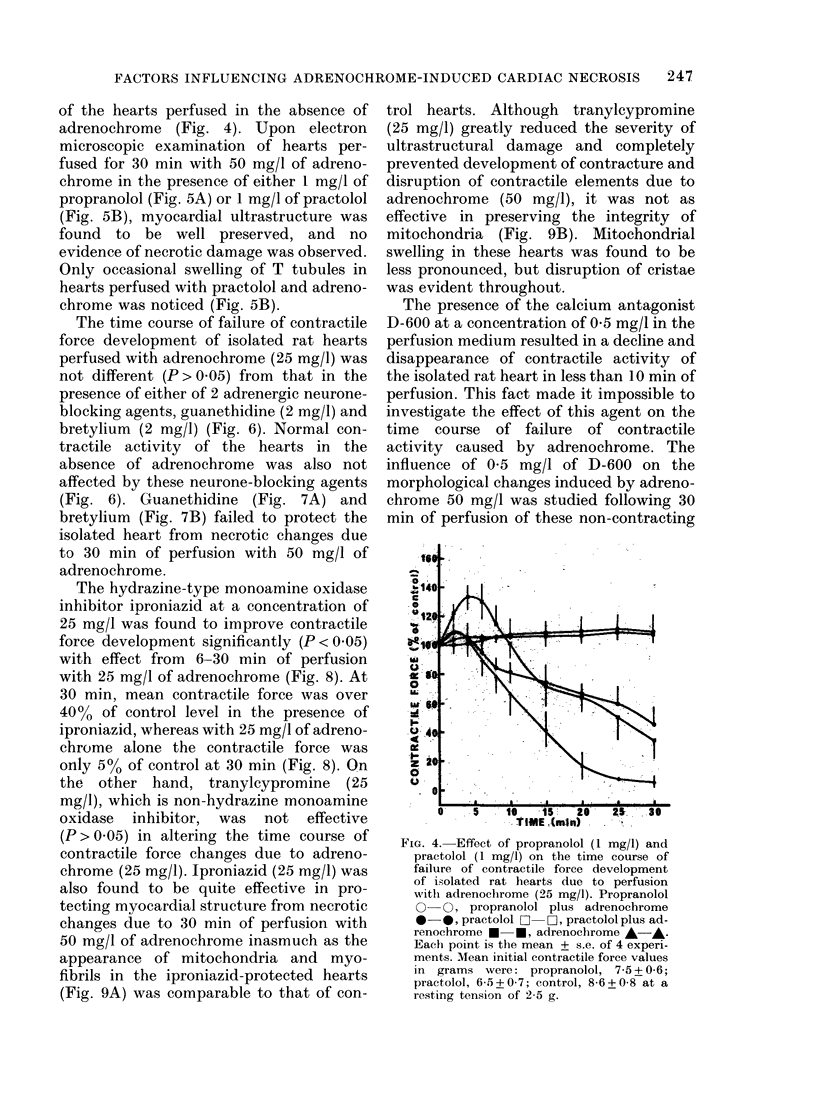
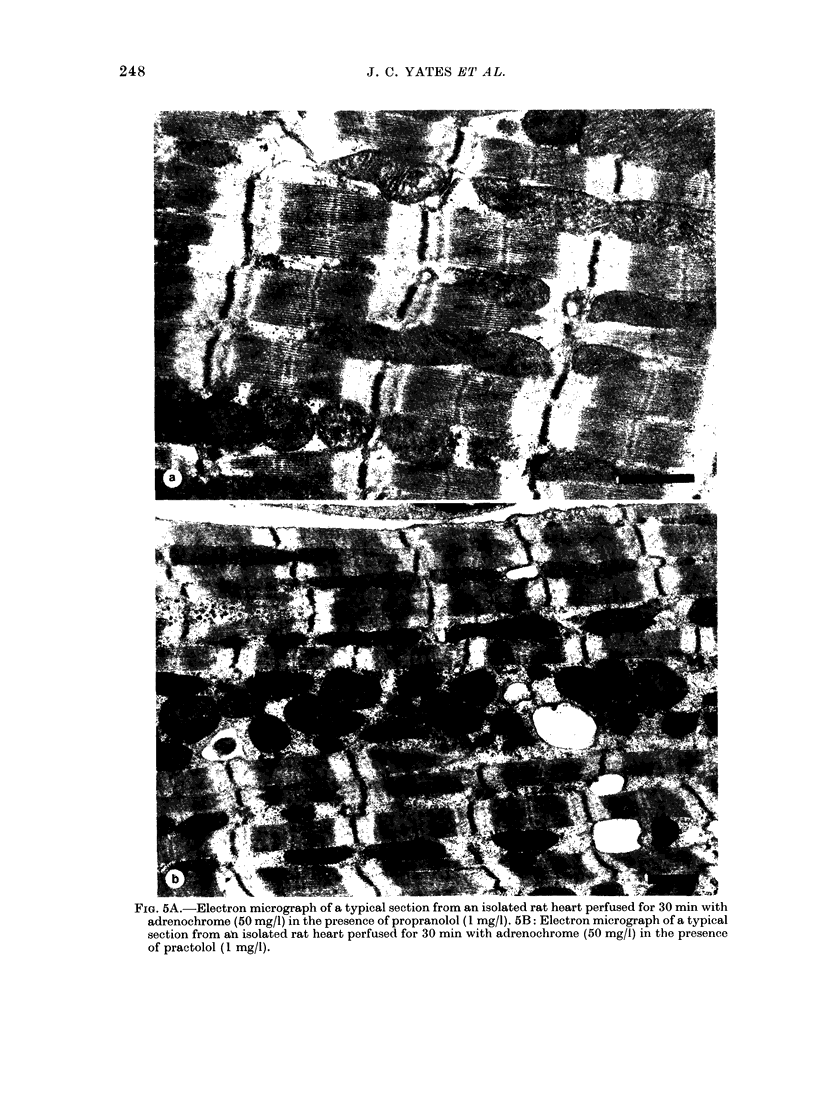
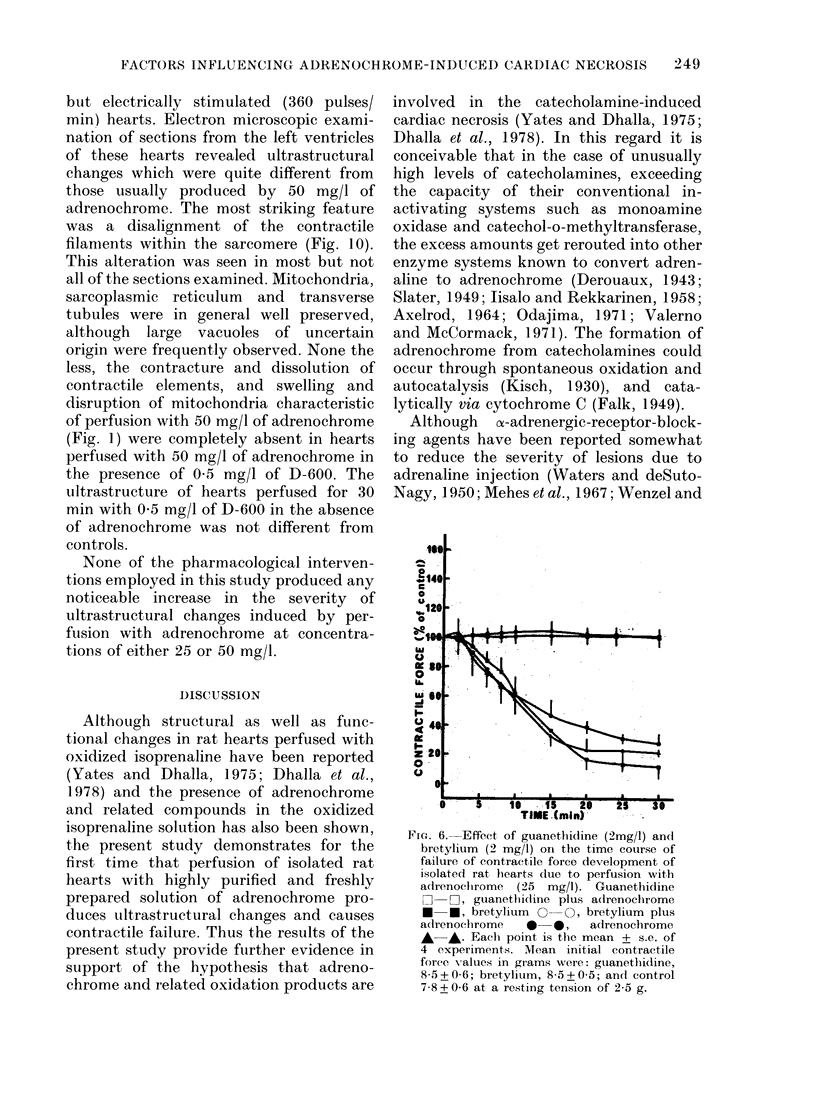
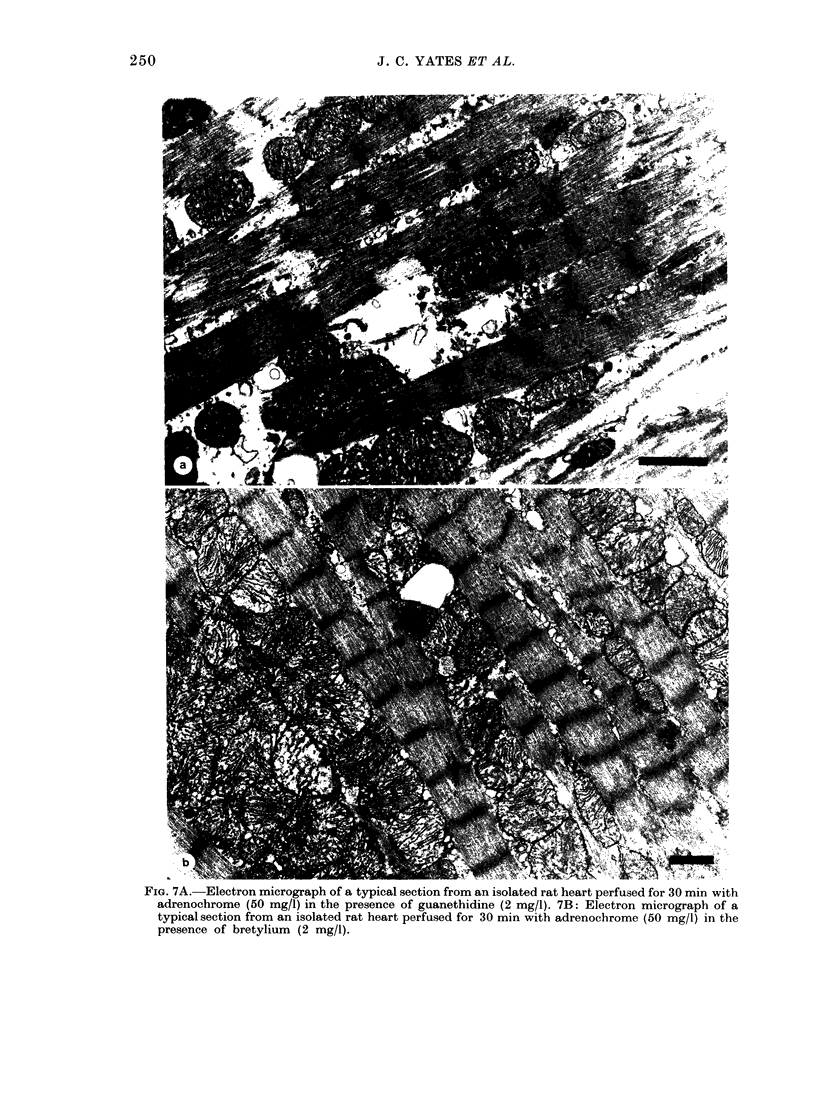
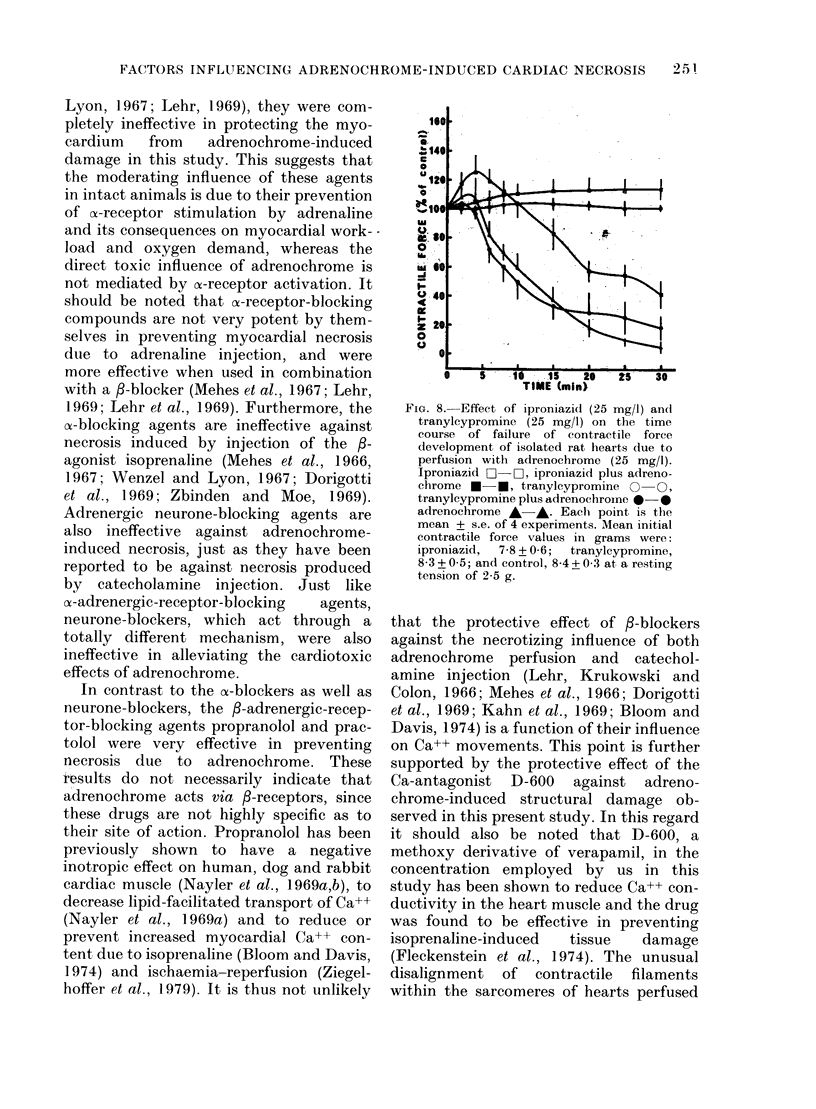
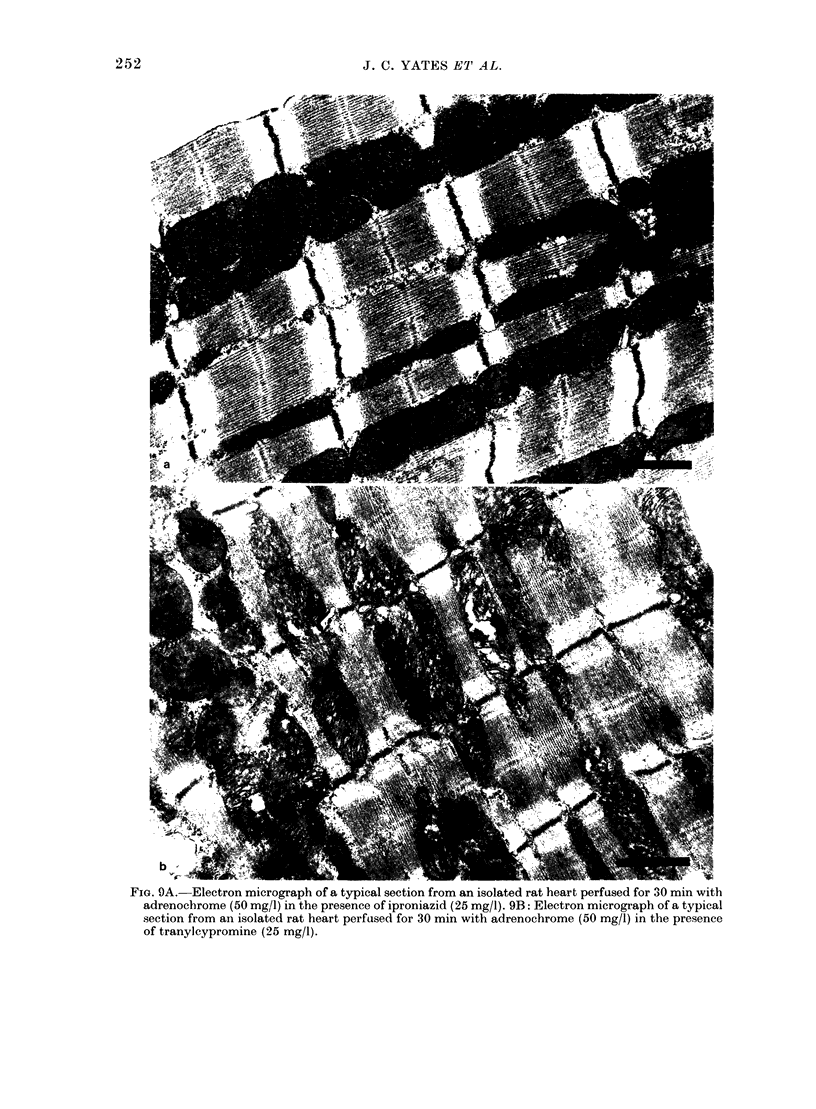
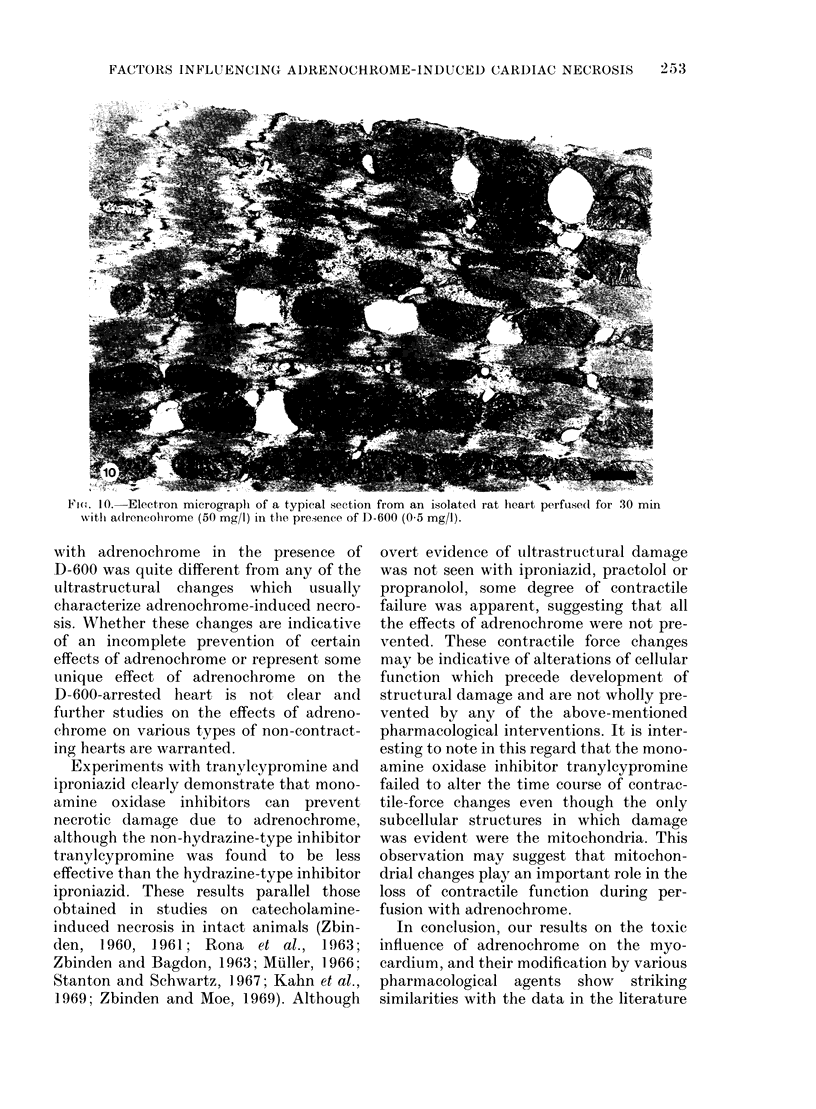
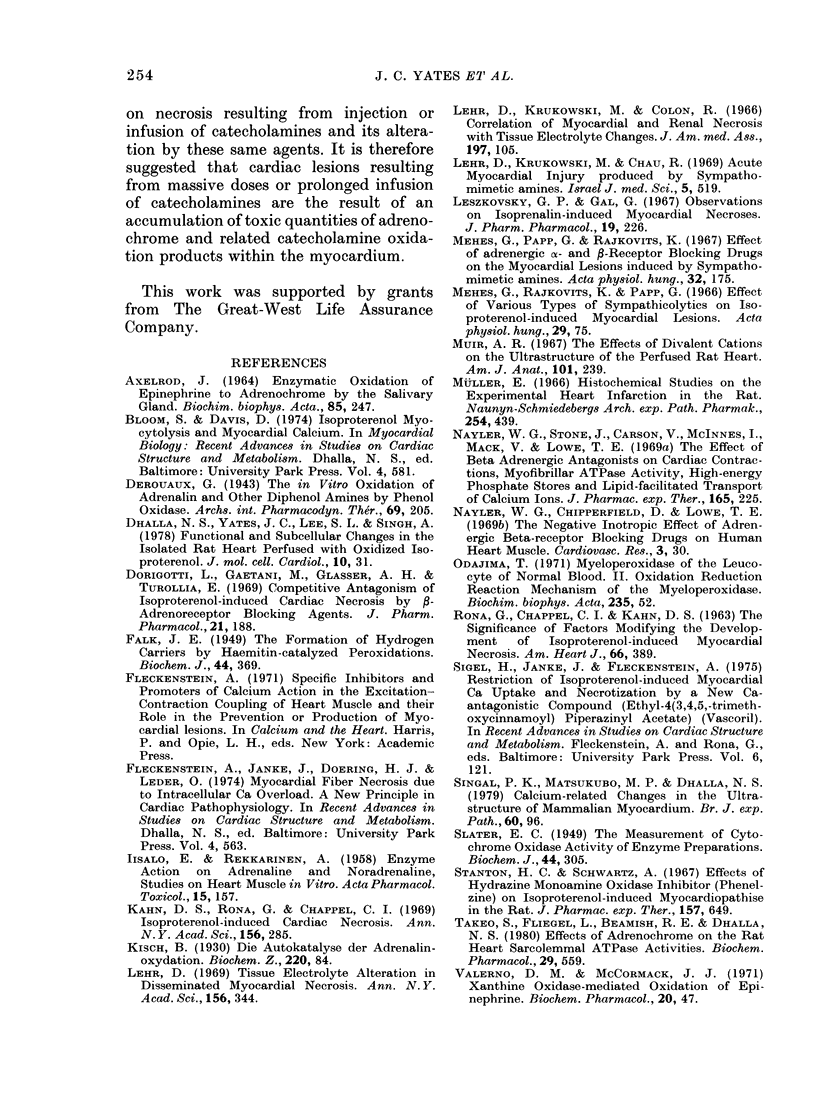
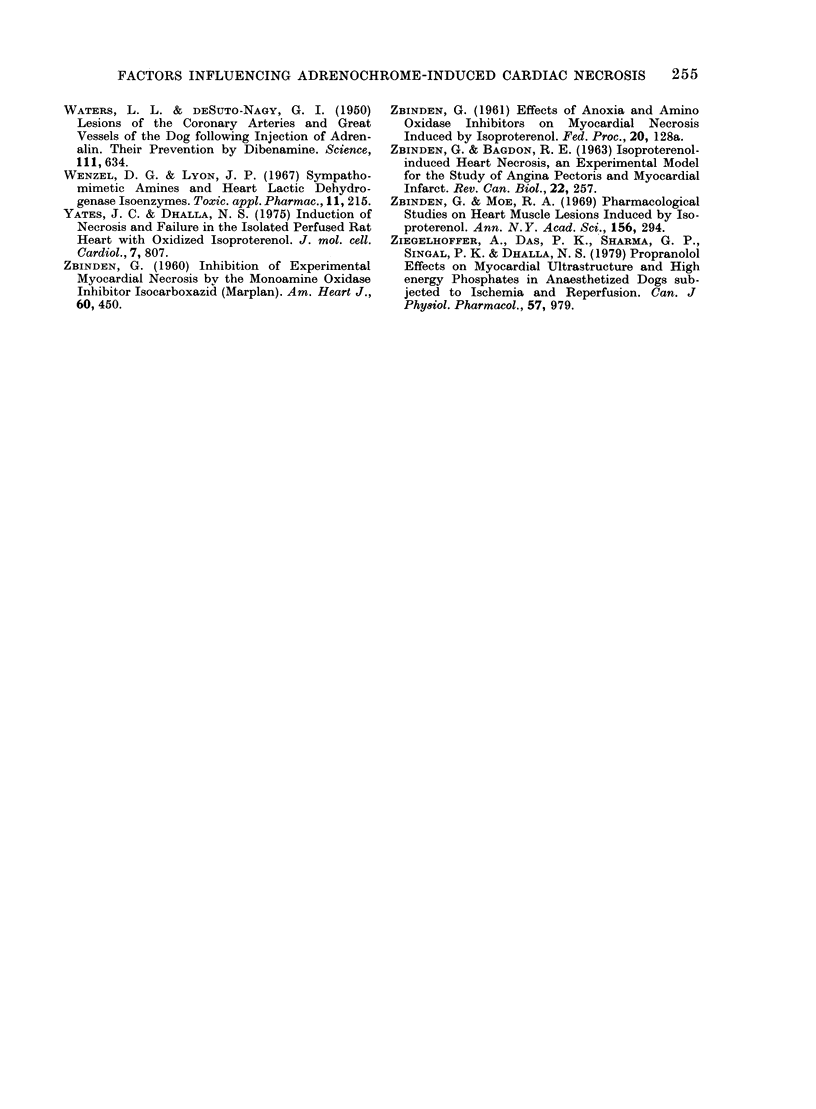
Images in this article
Selected References
These references are in PubMed. This may not be the complete list of references from this article.
- AXELROD J. ENZYMIC OXIDATION OF EPINEPHRINE TO ADRENOCHROME BY THE SALIVARY GLAND. Biochim Biophys Acta. 1964 May 4;85:247–254. doi: 10.1016/0926-6569(64)90245-7. [DOI] [PubMed] [Google Scholar]
- Dhalla N. S., Yates J. C., Lee S. L., Singh A. Functional and subcellular changes in the isolated rat heart perfused with oxidized isoproterenol. J Mol Cell Cardiol. 1978 Jan;10(1):31–41. doi: 10.1016/0022-2828(78)90004-4. [DOI] [PubMed] [Google Scholar]
- Dorigotti L., Gaetani M., Glässer A. H., Turolla E. Competitive antagonism of isoprenaline-induced cardiac necroses by beta-adrenoreceptor blocking agents. J Pharm Pharmacol. 1969 Mar;21(3):188–191. doi: 10.1111/j.2042-7158.1969.tb08225.x. [DOI] [PubMed] [Google Scholar]
- Falk J. E. The formation of hydrogen carriers by haematin-catalyzed peroxidations. 2. Some reactions of adrenaline and adrenochrome. Biochem J. 1949;44(3):369–373. [PMC free article] [PubMed] [Google Scholar]
- Kahn D. S., Rona G., Chappel C. I. Isoproterenol-induced cardiac necrosis. Ann N Y Acad Sci. 1969 Jan 31;156(1):285–293. doi: 10.1111/j.1749-6632.1969.tb16735.x. [DOI] [PubMed] [Google Scholar]
- Lehr D., Krukowski M., Chau R. Acute myocardial injury produced by sympathomimetic amines. Isr J Med Sci. 1969 Jul-Aug;5(4):519–524. [PubMed] [Google Scholar]
- Lehr D., Krukowski M., Colón R. Correlation of myocardial and renal necrosis with tissue electrolyte changes. JAMA. 1966 Jul 11;197(2):105–112. [PubMed] [Google Scholar]
- Lehr D. Tissue electrolyte alteration in disseminated myocardial necrosis. Ann N Y Acad Sci. 1969 Jan 31;156(1):344–378. doi: 10.1111/j.1749-6632.1969.tb16739.x. [DOI] [PubMed] [Google Scholar]
- Leszkovszky G. P., Gál G. Observations on isoprenaline-induced myocardial necroses. J Pharm Pharmacol. 1967 Apr;19(4):226–230. doi: 10.1111/j.2042-7158.1967.tb08076.x. [DOI] [PubMed] [Google Scholar]
- Muir A. R. The effects of divalent cations on the ultrastructure of the perfused rat heart. J Anat. 1967 Apr;101(Pt 2):239–261. [PMC free article] [PubMed] [Google Scholar]
- Méhes G., Papp G., Rajkovits K. Effect of adrenergic alpha- and beta-receptor blocking drugs on the myocardial lesions induced by sympathomimetic amines. Acta Physiol Acad Sci Hung. 1967;32(1):175–184. [PubMed] [Google Scholar]
- Méhes G., Rajkovits K., Papp G. Effect of various types of sympathicolytics on isoproterenol-induced myocardial lesions. Acta Physiol Acad Sci Hung. 1966;29(1):75–85. [PubMed] [Google Scholar]
- Nayler W. G., Chipperfield D., Lowe T. E. The negative inotropic effect of adrenergic betareceptor blocking drugs on human heart muscle. Cardiovasc Res. 1969 Jan;3(1):30–36. doi: 10.1093/cvr/3.1.30. [DOI] [PubMed] [Google Scholar]
- Nayler W. G., Stone J., Carson V., McInnes I., Mack V., Lowe T. E. The effect of beta adrenergic antagonists on cardiac contractions, myofibrillar ATPase activity, high-energy phosphate stores and lipid-facilitated transfort of calciumiones. J Pharmacol Exp Ther. 1969 Feb;165(2):225–233. [PubMed] [Google Scholar]
- RONA G., CHAPPEL C. I., KAHN D. S. THE SIGNIFICANCE OF FACTORS MODIFYING THE DEVELOPMENT OF ISOPROTERENOL-INDUCED MYOCARDIAL NECROSIS. Am Heart J. 1963 Sep;66:389–395. doi: 10.1016/0002-8703(63)90271-0. [DOI] [PubMed] [Google Scholar]
- Singal P. K., Matsukubo M. P., Dhalla N. S. Calcium-related changes in the ultrastructure of mammalian myocardium. Br J Exp Pathol. 1979 Feb;60(1):96–106. [PMC free article] [PubMed] [Google Scholar]
- Slater E. C. The measurement of the cytochrome oxidase activity of enzyme preparations. Biochem J. 1949;44(3):305–318. doi: 10.1042/bj0440305. [DOI] [PMC free article] [PubMed] [Google Scholar]
- Stanton H. C., Schwartz A. Effects of a hydrazine monoamine oxidase inhibitor (phenelzine) on isoproterenol-induced myocardiopathies in the rat. J Pharmacol Exp Ther. 1967 Sep;157(3):649–658. [PubMed] [Google Scholar]
- Takeo S., Fliegel L., Beamish R. E., Dhalla N. S. Effects of adrenochrome on rat heart sarcolemmal ATPase activities. Biochem Pharmacol. 1980 Feb 15;29(4):559–564. doi: 10.1016/0006-2952(80)90376-7. [DOI] [PubMed] [Google Scholar]
- Valerino D. M., McCormack J. J. Xanthine oxidase-mediated oxidation of epinephrine. Biochem Pharmacol. 1971 Jan;20(1):47–55. doi: 10.1016/0006-2952(71)90470-9. [DOI] [PubMed] [Google Scholar]
- WATERS L. L., DeSUTO-NAGY G. I. Lesions of the coronary arteries and great vessels of the dog following injection of adrenalin. Their prevention by dibenamine. Science. 1950 Jun 9;111(2893):634–635. doi: 10.1126/science.111.2893.634. [DOI] [PubMed] [Google Scholar]
- Yates J. C., Dhalla N. S. Induction of necrosis and failure in the isolated perfused rat heart with oxidized isoproterenol. J Mol Cell Cardiol. 1975 Nov;7(11):807–816. doi: 10.1016/0022-2828(75)90132-7. [DOI] [PubMed] [Google Scholar]
- ZBINDEN G., BAGDON R. E. ISOPROTERENOL-INDUCED HEART NECROSIS, AN EXPERIMENTAL MODEL FOR THE STUDY OF ANGINA PECTORIS AND MYOCARDIAL INFARCT. Rev Can Biol. 1963 Jun;22:257–263. [PubMed] [Google Scholar]
- Zbinden G., Moe R. A. Pharmacological studies on heart muscle lesions induced by isoproterenol. Ann N Y Acad Sci. 1969 Jan 31;156(1):294–308. doi: 10.1111/j.1749-6632.1969.tb16736.x. [DOI] [PubMed] [Google Scholar]
- Ziegelhoffer A., Das P. K., Sharma G. P., Singal P. K., Dhalla N. S. Propranolol effects on myocardial ultrastructure and high energy phosphates in anesthetized dogs subjected to ischemia and reperfusion. Can J Physiol Pharmacol. 1979 Sep;57(9):979–986. doi: 10.1139/y79-147. [DOI] [PubMed] [Google Scholar]




